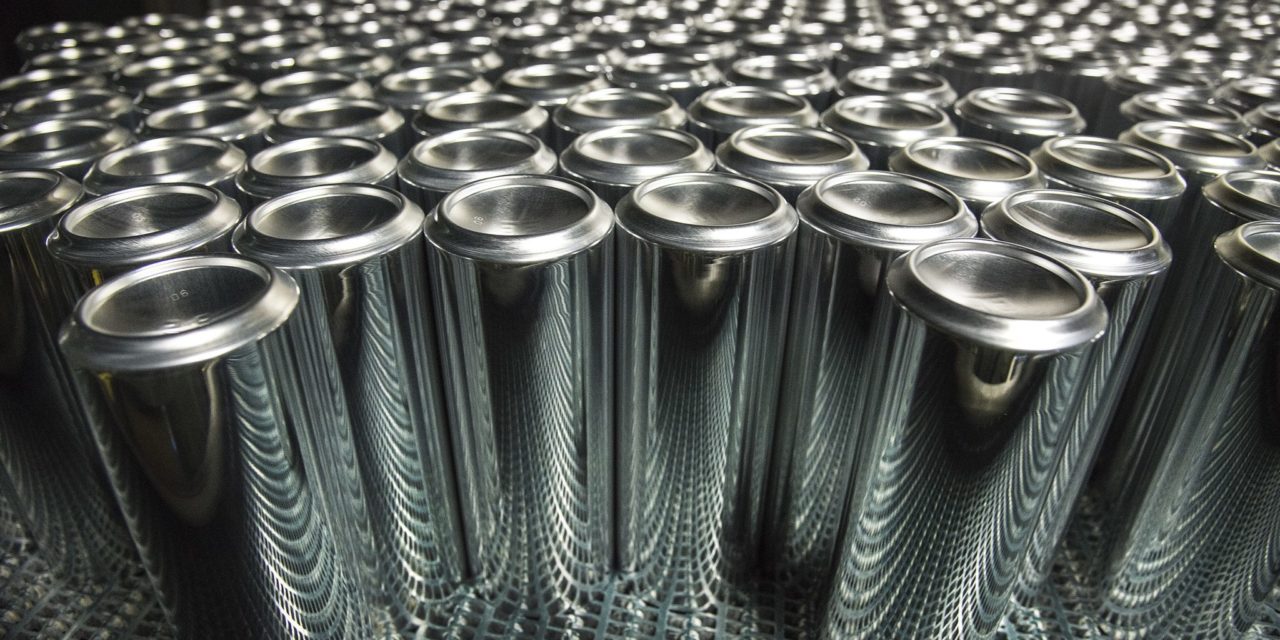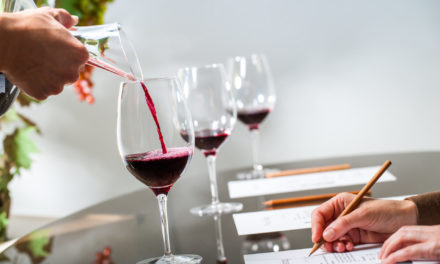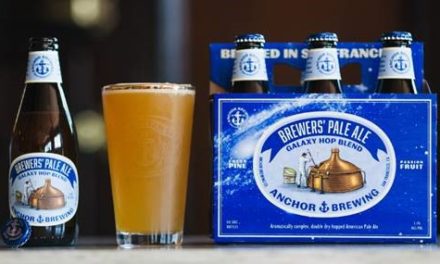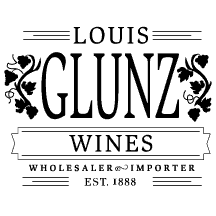When the first canned beer, a joint effort of Gottfried Krueger Brewing and the American Can Company (ACC), hit the U.S. market in 1935, it became an instant hit. ACC had spent years developing a tin can that was properly pressurized and with an interior coating that would keep the beverage from interacting with the metal.
In those early days, cans didn’t require a deposit. They were also lighter to ship, easier to stack, and faster to chill. The seal was tighter than a bottle cap so freshness could be maintained longer, no light could penetrate and damage flavors, and the cans could be fully imprinted (instead of having to adhere a label). Given these benefits, it was just a matter of time before other beverages wound up in cans, too.
Coors was the first to put beer in aluminum cans in 1959, and Royal Crown debuted canned cola in 1964. When the pull-off tab went the way of the Dodo in 1975, the popularity of cans skyrocketed.
Early adopters
Cans were called out as the hottest wine trend of 2017 by Bloomberg, Forbes, and Money, among others. According to Nielsen data, sales of wine in cans increased 125 percent in 2016 over the previous year. Danelle Kosmal, Nielsen North America’s vice president of beverage alcohol, says, “Canned wine can create new drinking occasions and new opportunities for people to drink wine in places they haven’t in the past. I don’t think it will be a short-term trend.”
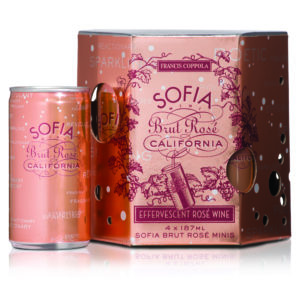
Francis Ford Coppola Winery was early t the canned wine trend with a 2004 Sofia 2004 run of Sofia, a Blanc de Blancs sparkling blend.
Among the first companies to put wine in cans was Australia’s Barokes, in 1994; ever-pioneering, it recently introduced an aluminum bottle. The first wine in cans to truly impact the U.S. market was Francis Ford Coppola’s Sofia sparkling in 2004. Then came Backpack Wines, Infinite Monkey Theorem (popular with Whole Foods and Frontier Airlines), Fiction and Alloy brands from Field Recordings, Flipflop, Mancan (“wine strictly for men”), Niven Family’s Tangent wines, Underwood from Union Wine Company, Wrath Wine’s AL cans, and Trader Joe’s popular Simpler brand.
Corey Beck, executive vice president at Francis Ford Coppola Winery in Geyserville, Calif., remembers being approached by the winery’s famed founder in 2002, who planted this seed: “I can buy beer in a can and soda in a can but not wine. Why not?”
The company’s first foray was a 2004 run of Sofia, a Blanc de Blancs sparkling blend of Pinot Blanc, Riesling, and Muscat that had previously been done in bottles. The 187 mL cans of bubbly come with an attached straw. Coppola Winery recently released 1,000 cases each of its Diamond series wines in cans (they’re also available in bottle).
A fast-growing category
In 2017, Niven Family Wine Estates rolled out its first canned wines under the Tangent brand. Today, it produces 3,600 annual cases each of rosé and Sauvignon Blanc. Says John Niven, vice president of sales and marketing, “Putting vibrant, clean, and crisp wines in a portable format such as a can was a no-brainer for us.
“We also wanted to raise the bar on the quality of canned wines. We’re a bit of a unicorn in the wine-in-can category, as both our offerings are SIP-certified sustainable and estate vineyard-designates. These wines have been a summer favorite and are still flying off the shelves because they’re ready to drink, easy to recycle, and can be enjoyed on the go since you don’t need a wineglass or a corkscrew.”
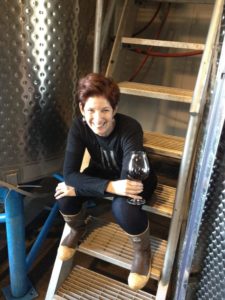
“If you told me two years ago that I’d be making wine in cans, I’d have said you were crazy.” —Sabrine Rodems, Wrath Wines
When Sabrine Rodems, winemaker at Wrath Wines in California’s Santa Lucia Highlands, first heard about wine in cans, she laughed it off as “Another silly trend! If you told me two years ago that I’d be making wine in cans, I’d have said you were crazy. No way!”
Then her boss, Wrath owner Michael Thomas, came to her with a wacky idea: Let’s broaden our wine portfolio into some new areas, like cans. They decided to create AL (named for aluminum’s atomic designation on the periodic table), a four-pack of premium estate Sauvignon Blanc in 375 mL cans. Rodems worried about taming the acidity in this naturally sassy and vivacious grape and explains that each wine must be tested before it’s canned, because “when drinking from a can, you have to be able to have that liquid hit the back of your throat, so you have to balance the acidity so it isn’t too aggressive in your mouth.”
In 2016, Jim Doehring founded Backpack Wines in Washington state with Cheeky Rosé and Snappy White in 250 mL four-can packs. The following fall, it introduced Rowdy Red, showing that cans aren’t just a summer fad. Already in 1,000 stores and counting, the cans are popular and Doehring has received repeated requests from both consumers and distributors for a sparkler. He plans to bring one to market early next year.
“The canned wine category is continuing to take the industry by storm,” says Doehring. “We’ve seen success across all markets but have had the greatest success in Illinois, Florida, and Texas. We’ve created a strong footprint across all markets and are currently expanding into California and New York.”
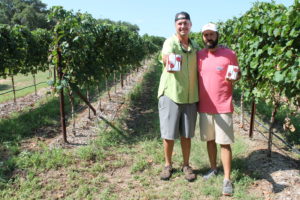
William Chris Vineyards co-founder Chris Brundrett and Lost Draw Cellars founder Andrew Sides formed Yes We Can Wine in 2017 to can a 100 percent Texas-grown rosé, called Sway Rosé.
William Chris Vineyards co-founder Chris Brundrett and Lost Draw Cellars founder Andrew Sides formed Yes We Can Wine in 2017 to can a 100 percent Texas-grown rosé, called Sway Rosé; it’s currently available in three-packs of 250 mL cans, with plans to debut 187 mL cans for individual sale in 2018. Brundrett says they wanted to inspire people to think differently about wine: “Instead of having folks commit a day to a winery to have a great experience, we can bring the experience to them, enjoying a high-quality, Texas-grown rosé. To us, it’s OK for wine to be fun!”
He adds that rosé is perfect for outdoor activities, which are popular in Texas. “It’s hot here, so a chilled can of rosé complements the lifestyle. Plus, rosé goes so well with Texas cuisine.”
The cities of Austin and San Antonio are dominating Yes We Can sales, with Texas Hill Country close behind. Expansion to Houston, the Gulf Coast, and Chicago are in the works, as are more canned varieties.
Coppola’s Beck agrees that warm weather and cold cans go together well. “Our cans have done extremely well in such areas as Miami Beach, Arizona, and Texas—places that are heavy on resorts,” he says. “They’re perfect for pools and other places where glass isn’t acceptable and they’re also great for picnics.”
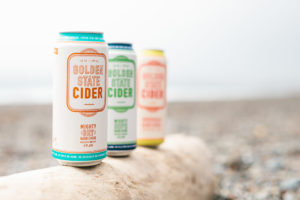
Golden State Cider has been putting its Mighty Dry Hard Cider, Mighty Hops Hard Cider, and Gingergrass Hard Cider in cans since 2014.
Cider and cocktails, too
Cider in cans is also on the rise. Spirited cider columnist Darlene Hayes explains that these ciders tend to be lighter and sessional. An increasing number of cidermakers whose business has focused on crafting more nuanced ciders in bottles (often 750 mL) for their appeal in a fine dining environment are adding more sessionable ciders in cans, while others have moved to cans exclusively. Hayes says this is likely an attempt to tap into the larger part of the cider market that’s looking for something easy to drink and easily portable.
Jolie Devoto-Wade, co-owner of Golden State Cider in Sebastopol, Calif., uses both bottles and cans. She’s been putting her Mighty Dry Hard Cider, Mighty Hops Hard Cider, and Gingergrass Hard Cider in cans since 2014. She says bottles have “high-end appeal for the sophisticated drinker,” but cans convey “approachability for a broader market.” She’s gone with 16-ounce cans from the start, and the company is growing 200 to 300 percent per year.
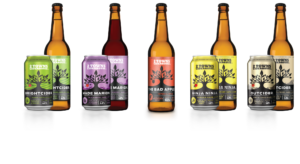
2 Towns Cider offers both bottled and canned versions of its ciders.
Lee Larsen, CEO and founding cidermaker of 2 Towns Ciderhouse in Oregon, says his was among the first cider companies in the Northwest to can its product (in 2013). Today, it offers both bottled and canned versions of its ciders. Says Larsen, “We like the diversity of having multiple options for cider enthusiasts.”
Offering consumers more choices is a large part of what’s driving the move to canned beverages, and no corner of the industry will be left behind. Sacramento, Calif.-based Can Can Cocktails launched in 2016 with premade craft cocktails, produced in runs of about 3,000, 12-ounce cans per batch. Founder Ryan Seng started with a vodka and soda (using mint-infused vodka) and just recently launched Boar’s bourbon root beer (made with angostura bitters).
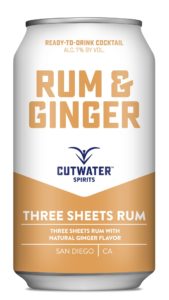
“It’s always fun to watch folks try them for the first time and change their mind about what a canned cocktail can be.” —Nicole Ganz Wood, Cutwater Spirits
Cutwater Spirits, which began in 2008 as Ballast Point Spirits (a spinoff from Ballast Point Brewing), offers 10 ready-to-drink beverages (all vegan and gluten free). The canned cocktails debuted in 2015 and, the following year, Cutwater evolved into its own company separate from the brewery. Offerings include Moscow mule, gin and tonic, bloody Mary, vodka soda, rum and cola, and rum and ginger.
Marketing Manager Nicole Ganz Wood says the decision to can cocktails “was a complete accident, inspired by a trip abroad when we were ready for a break from beer. Canned cocktails are big internationally,” she explains, “and we knew we could elevate the canned cocktail in the U.S. using our premium, award-winning spirits and mixers.”
Ballast Point, the first craft brewery in San Diego to can its beers, converted its original beer canning equipment into a canned cocktail line in 2015. It’s been a wild ride, admits Wood: “People don’t know what the heck it is: It’s new.
“Most current canned drinks are typically malt-based offerings, such as Mike’s Hard Lemonade. What we make is different. We’re a distillery first—great spirits, great mixers, and now great canned cocktails. It’s always fun to watch folks try them for the first time and change their mind about what a canned cocktail can be.”
Can it get any better than a pull-tab insta-cocktail? We think not.
Canning Challenges
According to Coppola’s Beck, the logistics of canning wine proved a bit tricky at first. To start, finding a canning partner that was also a bonded winery wasn’t easy. Eventually, the winery helped Varni Brothers Corp. (a pre-Prohibition bottler and distributor in California’s Central Valley) restore its long-lapsed liquor license; now all Coppola canning takes place at the company’s Modesto facility. To address quality, Coppola worked closely with manufacturer Ball Corp. to develop a coating that wouldn’t react with the sulphur in wine—something that hadn’t been an issue with beer or soda.
In Oregon, 2 Towns has its own canning line, as does Golden State Cider in California. “With any packaging line—bottle or can—dissolved oxygen and being as gentle to the product as possible are huge concerns, as any miscalculation can greatly affect the product on the shelf,” says Larsen.
He continues, “Not all packaging lines—or the people running them—handle these issues well. We’ve invested in a piece of equipment and trained our team to mitigate the threat of oxygen entering the cans prior to sealing. This keeps our product true to its original form.”
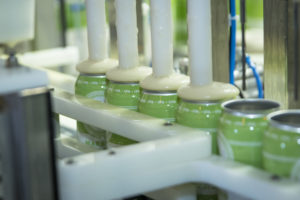
“New craft breweries are putting their beers in cans rather than bottles, and many up-and-coming wineries are going straight to cans.” —Andrew Ferguson, Wild Goose-Meheen
Wild Goose-Meheen in Boulder, Colo., provides both bottling and canning services to beverage producers across the country. While 85 percent of its business is beer, over the last year. Director of International Sales Andrew Ferguson has seen more cold brew coffee, wine, and other beverages joining the mix. And in a back-to-the-beginning move, says Ferguson, “New craft breweries are putting their beers in cans rather than bottles, and many up-and-coming wineries are looking for ways to differentiate themselves, including going straight to cans.”
IRI Group, a U.S.-based market research company, shows sales of canned craft beer at least doubling among all sizes of brewers between 2013 and 2016. It’s telling when Jim Koch, the chairman of Boston Beer, which makes Samuel Adams beers and Angry Orchard hard ciders, says in an earnings call to shareholders and analysts that craft in cans is growing faster than craft in bottles. The company plans to roll out multiple new beers in 2018, including the SAM ’76, a unique cross between ale and lager, which will be sold in cans and bottles. It’s Truly Spiked & Sparkling and Twisted Teas, available in cans and bottles, have seen strong growth since launch.
Alec Stefansky of Uncommon Brewing in Santa Cruz, Calif., has been doing cans since he started in 2007, primarily for freshness, recyclability and weight. “It was definitely an uphill battle when I first started. There were only a handful of craft breweries around the country using cans. It took time and consistently great beer in those cans to break through consumer preconceptions.”
Instead of printing directly on aluminum, he chose printed labels for greater flexibility. Says Stefansky, “Instead of buying a semi truckload of cans for each label, I can tailor our label orders to handle a few barrels of specialty beers at a time. [This choice has] let us release nearly 30 different labels in the last three years.”
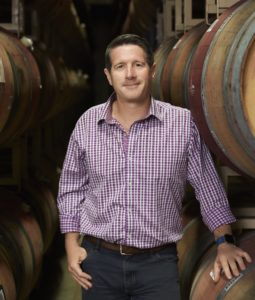
“Cans are much better at holding carbonation. A can is like a time capsule.” —Corey Beck, Francis Ford Coppola Winery
A sustainable choice
According to data compiled by Scott McCarty, director of communications and engagement for Ball Beverage Packaging ’s North and Central America division, cans represent the future of the beverage market. That’s because aluminum cans are more easily and more frequently recycled than glass or PET bottles, saving 95 percent more energy versus using raw materials and driving almost all the value in the recycling chain, plus they’re the most recyclable of all beverage containers (an average can contains 70 percent recycled metal). Recycled aluminum cans can be back on the store shelf in as little as 60 days—glass and plastic are typically “down-cycled” into products such as carpet fiber or landfill liner, while aluminum cans can be recycled over and over again in a “closed loop” recycling process.
Factor in the cost of beverage transportation (the heaviest part of any grocery store load), and lightweight cans again win out over weighty glass bottles. When first introduced, aluminum cans weighed just three ounces. Now, they weigh less than half an ounce.
Beyond these business efficiencies, it comes down to taste and consumer convenience: What’s the best delivery device for capturing and maintaining the flavors the beverage maker intended?
Coppola’s Beck touts the ability of cans to preserve freshness, referring to the decision of the owner of Sierra Nevada Brewing Company to finally introduce beer in cans. “I prefer beer in a can—I ask for it. Cans are much better at holding carbonation. A can is like a time capsule.”
(Author Laura Ness samples a few canned beverages here.)

